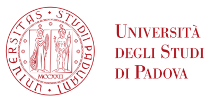
Elena Salillas is currently a Marie Curie Fellow at University of Padova (Dept. Of Neuroscienze).
She has developed diverse research lines along her career. They include research on language processing, math cognition, developmental disorders (Dyscalculia) or bilingual math. For that, she has updated her methodological knowledge when the research questions required new techniques. Thus, she has applied Behavioral, Electrophysiology, Experimental Neuropsychology, lesion analyses, TMS, MEG techniques to test her hypotheses. Perhaps her most sustained research has dealt with the study of spatio-numerical representation from 2004 and Bilingual Math from 2008. From 2010 she developed a consistent line of research describing the specifics of Bilingual math functioning. Addressing questions that have important implications for developmental disorders and math training in bilinguals, laying within important debates in math cognition. Her hypotheses can be transposed to the learning of other contents where the management of the two languages for one process is necessary from early learning. ES has developed another important research line, which merges to the health sector: Two projects on presurgical mapping in two distinct types of patients (intractable epilepsy and brain tumors). They entailed a collaboration with Florida Hospital from children (FH) in the US and Hospital Cruces in Bilbao. They deal mainly with mapping of language and math functions and imply different methods: ECoG and MEG in FH and fMRI, MEG and DCE in the Hospital Cruces. Currently, she has focused on the information that the study of reorganization of math functions in brain tumor patients (LGG) can provide in the understanding of the numerical system. She develops this new line of research at the University of Padova (Dpt. Of Neuroscienze) as a Marie Curie Fellow, in collaboration with the PNC, the AOP and the IRCCS Fondazione Ospedale San Camillo in Lido.
Her current research interests mainly involve:
– Finding regularities in the reorganization of the numerical brain in LGG patients, as a channel for understanding alternative neural pathways for the same numerical function, and with the ultimate goal of supporting rehabilitation. This is done through the combination of various neuroimaging techniques with a longitudinal approach.
– The development of a math battery for the mapping of brain math functions in epilepsy patients, combining MEG and ECoG techniques (In collaboration with Florida Hospital, Orlando, US).
– Brain systems for calculation and the processing of non-numerical dimensions

